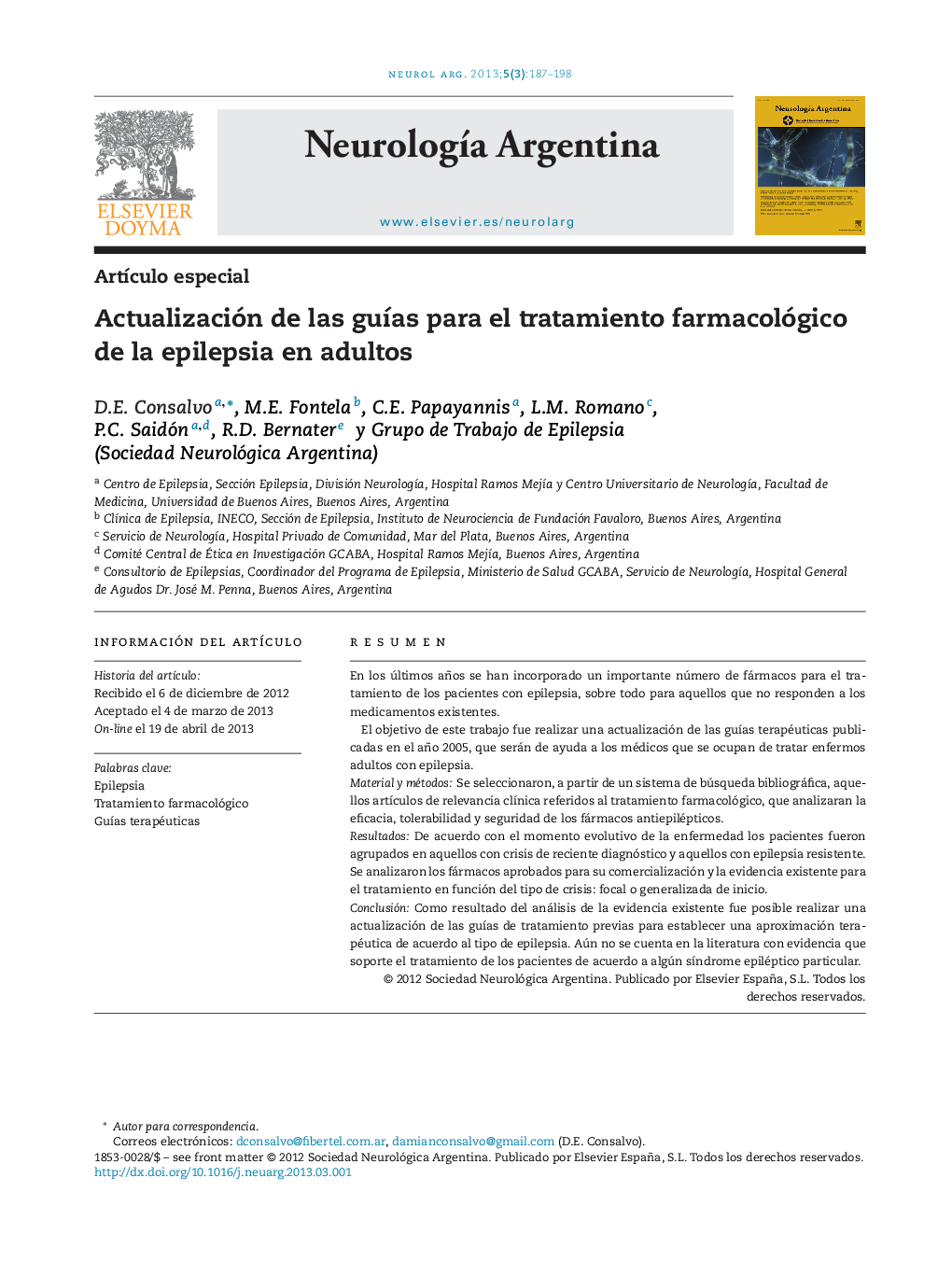| Article ID | Journal | Published Year | Pages | File Type |
|---|---|---|---|---|
| 3076611 | Neurología Argentina | 2013 | 12 Pages |
ResumenEn los últimos años se han incorporado un importante número de fármacos para el tratamiento de los pacientes con epilepsia, sobre todo para aquellos que no responden a los medicamentos existentes.El objetivo de este trabajo fue realizar una actualización de las guías terapéuticas publicadas en el año 2005, que serán de ayuda a los médicos que se ocupan de tratar enfermos adultos con epilepsia.Material y métodosSe seleccionaron, a partir de un sistema de búsqueda bibliográfica, aquellos artículos de relevancia clínica referidos al tratamiento farmacológico, que analizaran la eficacia, tolerabilidad y seguridad de los fármacos antiepilépticos.ResultadosDe acuerdo con el momento evolutivo de la enfermedad los pacientes fueron agrupados en aquellos con crisis de reciente diagnóstico y aquellos con epilepsia resistente. Se analizaron los fármacos aprobados para su comercialización y la evidencia existente para el tratamiento en función del tipo de crisis: focal o generalizada de inicio.ConclusiónComo resultado del análisis de la evidencia existente fue posible realizar una actualización de las guías de tratamiento previas para establecer una aproximación terapéutica de acuerdo al tipo de epilepsia. Aún no se cuenta en la literatura con evidencia que soporte el tratamiento de los pacientes de acuerdo a algún síndrome epiléptico particular.
In the last few years the number of antiepileptic drugs available has increased considerably, in particular for those patients who do not respond to the existing drugs.The aim of this study was to perform an update of treatment guidelines published in 2005, that will be helpful to physicians who take care of adult epileptic patients.Material and methodsA bibliographical search was done for those relevant articles referred to the pharmacological treatment of the epilepsy, analyzing the efficacy, tolerability and safety of the antiepileptic drugs.ResultsAccording to the evolutive stage of the disease, epilepsy patients were grouped into those with recent diagnosis and drug-resistant patients. We analyzed antiepileptic drugs approved for marketing and the evidence for the treatment according to the seizure type: focal or generalized at onset.ConclusionAs a result of analyzing the available evidence was possible to perform an update of the previous treatment guidelines establishing a therapeutic approach based on the type of epilepsy. Although, there is no evidence in the literature, that support the treatment of patients according to a particular epileptic syndrome.
